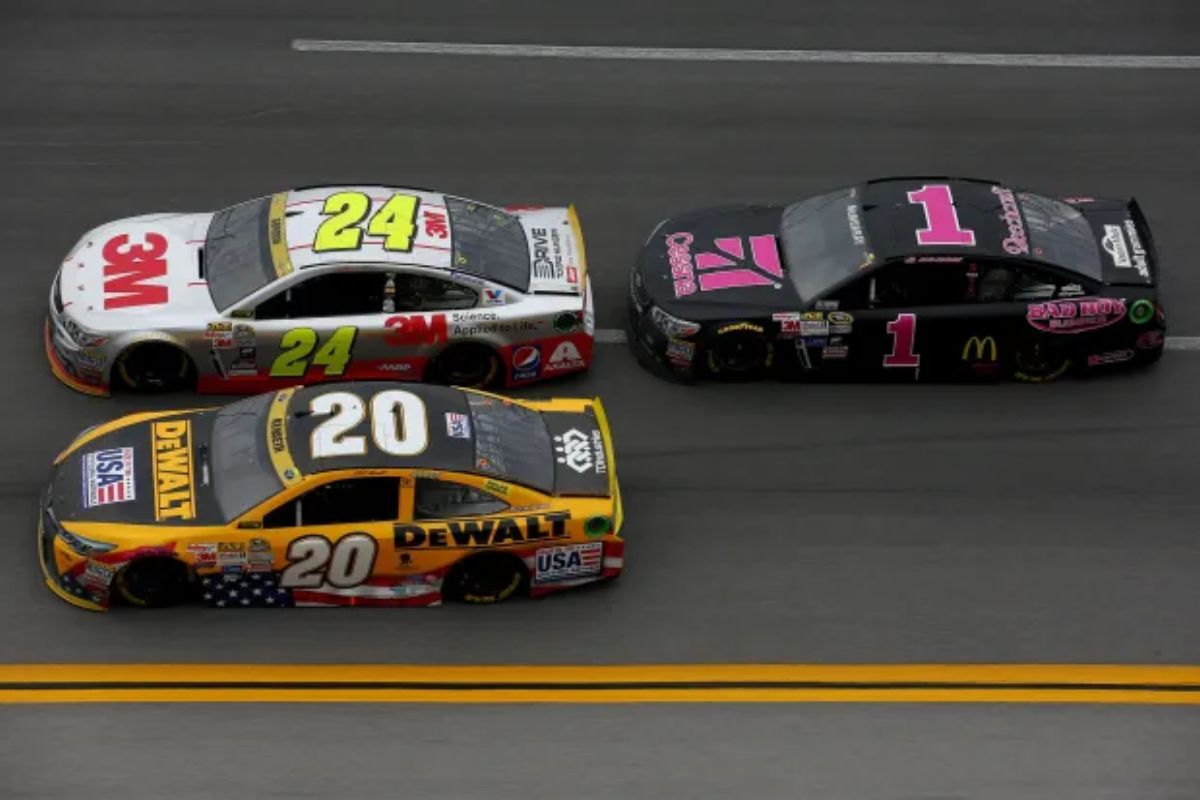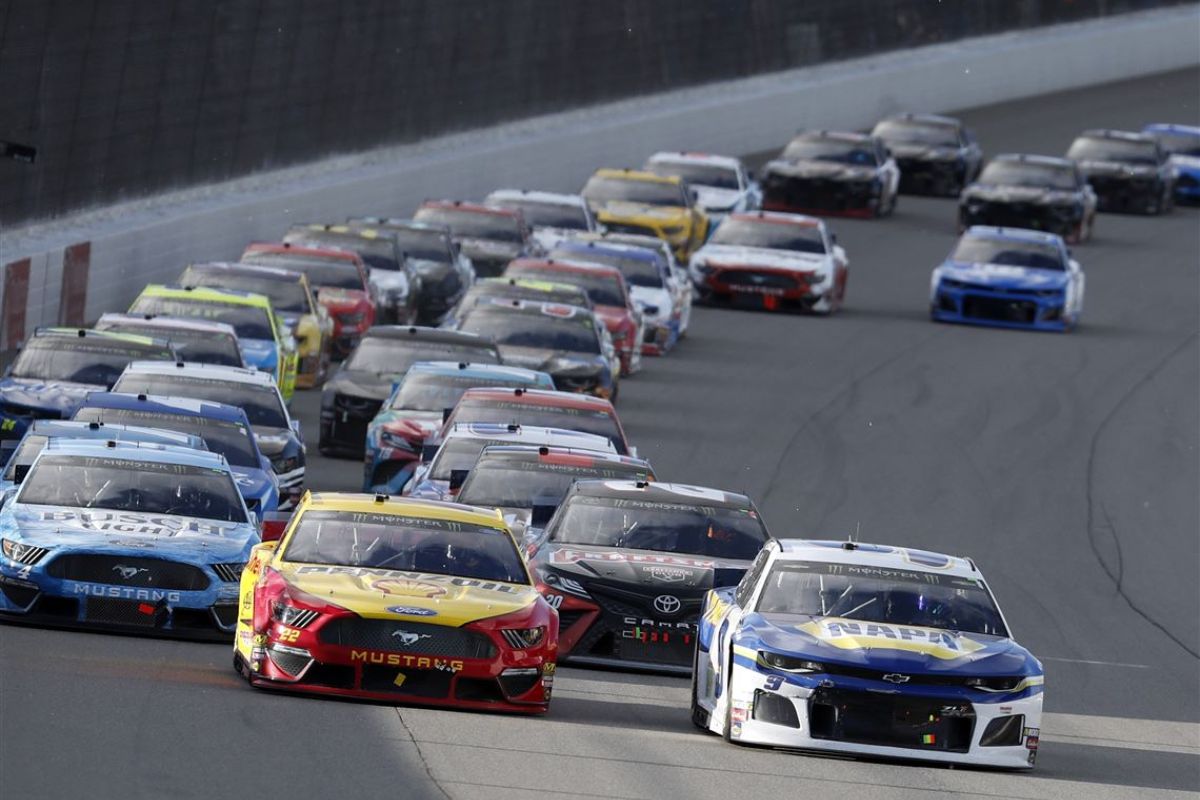NASCAR’s Pit Lane Drama: Following the COTA race week, NASCAR has implemented new pit lane stipulations in response to teams exploiting sneaky tactics for an unfair advantage. Stricter regulations are now in place to uphold fair competition and prevent rule circumvention. Restrictions have been imposed on the use of adhesives in pit boxes to maintain fair competition and prevent rule circumvention. The impact of these changes on drivers, track limits, and future NASCAR races is significant. Discover the detailed overview, rule changes, and potential critiques surrounding this ongoing pit lane drama for a deeper understanding of the competitive landscape.
Key Takeaways
- NASCAR implemented stricter pit lane regulations to prevent teams from gaining unfair advantages.
- Restrictions on the use of adhesives in pit boxes to avoid circumventing rules for competitive edge.
- Recent controversies highlighted the need for NASCAR to enforce rules consistently for fair competition.
- Pit lane drama involved teams using questionable tactics, prompting NASCAR to enhance rule enforcement.
- Aim to level the playing field and maintain race integrity by prohibiting unsanctioned tactics for advantages.
NASCAR Introduces New Pit Lane Stipulations After COTA Race Week
After a tumultuous race week at Circuit of the Americas, NASCAR Introduces New Pit Lane stipulations affecting all three nationwide series. These stipulations are aimed at addressing pit strategy, team tactics, race consequences, rule enforcement, and competitive advantage in the Cup, Xfinity, and Truck Series at COTA.
Pit strategy plays an important role in NASCAR races, with teams constantly seeking ways to gain a competitive edge through efficient pit stops. However, some teams have been using questionable tactics to circumvent rules and gain an unfair advantage. This behavior has led to race consequences, affecting not only the integrity of the sport but also the outcomes of races.
To combat these issues, NASCAR has decided to enforce stricter rules in pit lanes across all three series. Rule enforcement will be heightened to make sure that teams adhere to the regulations and compete fairly. By cracking down on violations and unsportsmanlike conduct in pit lanes, NASCAR aims to level the playing field and maintain the competitive integrity of the sport.
Ultimately, these new pit lane stipulations are designed to promote fair competition and prevent teams from gaining an unfair competitive advantage through deceptive tactics. NASCAR’s commitment to upholding the rules and ensuring a level playing field will be crucial in maintaining the excitement and authenticity of racing in the Cup, Xfinity, and Truck Series.

Overview of Rule Change
In response to recent challenges faced in pit lane management, NASCAR has implemented a thorough overview of rule changes aimed at enhancing race fairness and competitiveness. Pit strategies, team tactics, rule enforcement, maintaining a competitive edge, and sharpening pit crew focus are central themes in the new regulations.
Pit strategies have long been an important aspect of NASCAR races, with teams constantly seeking innovative ways to gain an advantage during pit stops. The rule changes aim to guarantee that these strategies are executed within the boundaries of fair play, preventing any team from gaining an unfair advantage through pit lane operations.
Team tactics, often honed over years of experience, play a significant role in NASCAR events. The new rules seek to level the playing field by restricting certain tactics that may provide an unfair edge over competitors. By standardizing certain procedures and enhancing oversight, NASCAR aims to promote fair competition among all teams.
Rule enforcement is paramount in maintaining the integrity of the sport. The updated regulations emphasize strict adherence to the rules governing pit lane activities, with penalties for any infractions clearly outlined. By enforcing these rules consistently and transparently, NASCAR aims to guarantee a fair and level playing field for all teams.
Maintaining a competitive edge while upholding the spirit of fair play is a delicate balance in NASCAR. The rule changes are designed to encourage healthy competition while discouraging any actions that may compromise the integrity of the sport.
Lastly, the new regulations place a spotlight on pit crew focus, emphasizing the importance of precision, teamwork, and efficiency during pit stops. By highlighting the significance of these aspects, NASCAR aims to elevate the standards of pit lane performance across all teams.
NASCAR now putting limits on where teams can put adhesive chemicals in their pit box as apparently team(s) with an opening at their pit out sprayed beyond their pit box to avoid wheel spin. New rule issued today: pic.twitter.com/wYY50HgQ0t
— Bob Pockrass (@bobpockrass) March 27, 2024
Details of the Rule Change
The recent rule changes implemented by NASCAR, specifically targeting the usage of adhesives in pit boxes, aim to maintain fair competition and race integrity in the high-stakes environment of racing. Pit strategy plays an essential role in a team’s success on the track, with traction control being a key aspect. Adhesives have been a go-to solution for teams looking to gain a competitive advantage by reducing wheelspin when exiting the pits.
In response to teams pushing the boundaries, NASCAR has introduced adhesive limitations within pit boxes. Observations post-COTA revealed that some teams were exploiting these compounds beyond designated areas to avoid wheelspin, prompting the enforcement of stricter rules. Additionally, NASCAR has imposed restrictions on chemicals that could potentially harm pit box surfaces or cause discoloration, ensuring that the pit lane remains safe and functional for all competitors.
These rule changes not only address immediate concerns but also set a precedent for the enforcement measures NASCAR will take to uphold fairness and competition in the sport. By regulating adhesive usage and maintaining control over pit lane activities, NASCAR aims to level the playing field and prevent teams from gaining unfair advantages through circumvention of the rules.
Impact on Drivers and Review of Track Limits
NASCAR’s scrutiny on track limits enforcement at Circuit of the Americas has highlighted the significant impact on drivers, particularly demonstrated through penalties affecting seasoned racers like Shane van Gisbergen and Kyle Larson. The controversy surrounding track limits has led to driver frustrations as penalties have altered race outcomes. Van Gisbergen, a prominent figure in Supercars racing, faced the consequences of these rules during the COTA event, where he was in contention for victory before being penalized. Similarly, NASCAR’s ruling affected Kyle Larson, who plummeted from second to 27th place after cutting the course on the final lap.
The track limit controversies have raised questions about enforcement consistency and competitive fairness. Drivers and teams are now grappling with the race strategy implications of pushing the limits within the confines of the rules. The review initiated by NASCAR signals a potential reevaluation of how track limits are monitored and enforced to guarantee a level playing field for all competitors. Moving forward, it will be essential for NASCAR to strike a balance between maintaining the integrity of the sport and allowing for exciting on-track battles without compromising competitive fairness. The outcome of this review could have far-reaching implications for future races and the overall landscape of NASCAR competition.

Critique and Further Actions
Critiquing NASCAR’s approach to track limit enforcement and exploring potential enhancements is vital for ensuring fairness and consistency in competition. The recent incidents have highlighted challenges in rule consistency and officiating, especially concerning track limits enforcement. NASCAR’s selective enforcement of track limits, unlike Formula One, raises questions about the fairness of competition. Elton Sawyer, NASCAR’s senior vice president of competitions, acknowledged the officiating challenges, stating that the focus should shift from constant officiating to allowing teams to showcase their skills, pit stops, and strategies on the track.
Elton Sawyer said:
“We’re calling balls and strikes on every lap and that’s not really where we want to be,” he told SiriusXM NASCAR Radio. I commend our team and the tower. I thought they did a good job, but it’s way too much about us and not enough about the athletes and our teams and our pit stops and strategy and things of that nature.”
Team strategies play an essential role in NASCAR races, and ensuring fair competition is crucial for maintaining the sport’s integrity. Sawyer emphasized the need for improvement, recognizing that more work is required to enhance the enforcement of track limits consistently. To address these challenges, NASCAR could consider implementing clearer guidelines on track limits, increasing transparency in officiating decisions, and providing teams with equal opportunities to compete.
Looking ahead, future improvements could involve establishing a more structured approach to track limit enforcement, leveraging technology for real-time monitoring, and incorporating feedback from teams to refine the rules further. By addressing these aspects, NASCAR can enhance the competitiveness of races, promote fair play, and elevate the overall spectator experience.
News in Brief
NASCAR’s recent pit lane rule changes have been implemented to address teams gaining unfair advantages during races.
These new stipulations aim to level the playing field and guarantee fair competition among drivers.
It will be intriguing to see how these changes impact future races and whether further adjustments will be necessary to uphold the integrity of the sport.
Our Reader’s Queries
Q: Can you watch NASCAR on Netflix?
A: “Watch Now: Get ready for the 2024 NASCAR season with the exciting new series “NASCAR: Full Speed” on Netflix, a must-watch for racing fans!”
Q: What is the importance of the NASCAR pit crew?
A: In the brief moment fans blink or grab a snack, pit crews swiftly change tires, refuel, and address any damage to the car. They also tend to the driver’s needs, ensuring seamless performance during the race.
Q: Why are NASCAR pit stops slower?
A: NASCAR pit stops were once delayed by the need to secure each wheel with five lug nuts. However, the transition to just one lug nut with the Generation 7 car has significantly reduced stop times. Kyle Busch’s team set a new Cup Series record with an 8.96-second stop in 2022 at Kansas Motor Speedway.
Q: What is pit road in NASCAR?
A: Each track in NASCAR features a pit road, an area beside the racing surface where cars slow down to make adjustments. Pit road lengths vary, but drivers typically enter just before the start-finish line and exit just beyond it.
Also Read: Bubba Wallace EXPLODES After Clash With Jimmie Johnson’s Driver at Cota!


